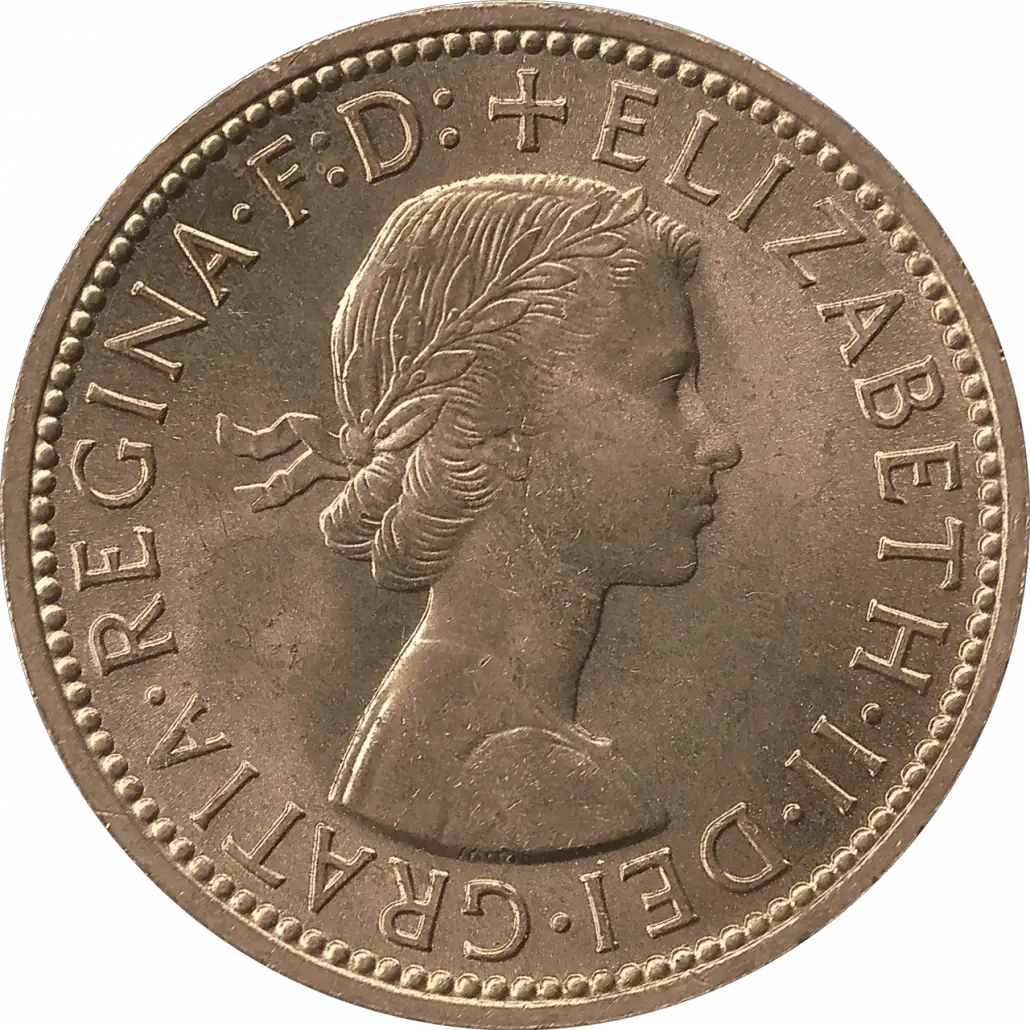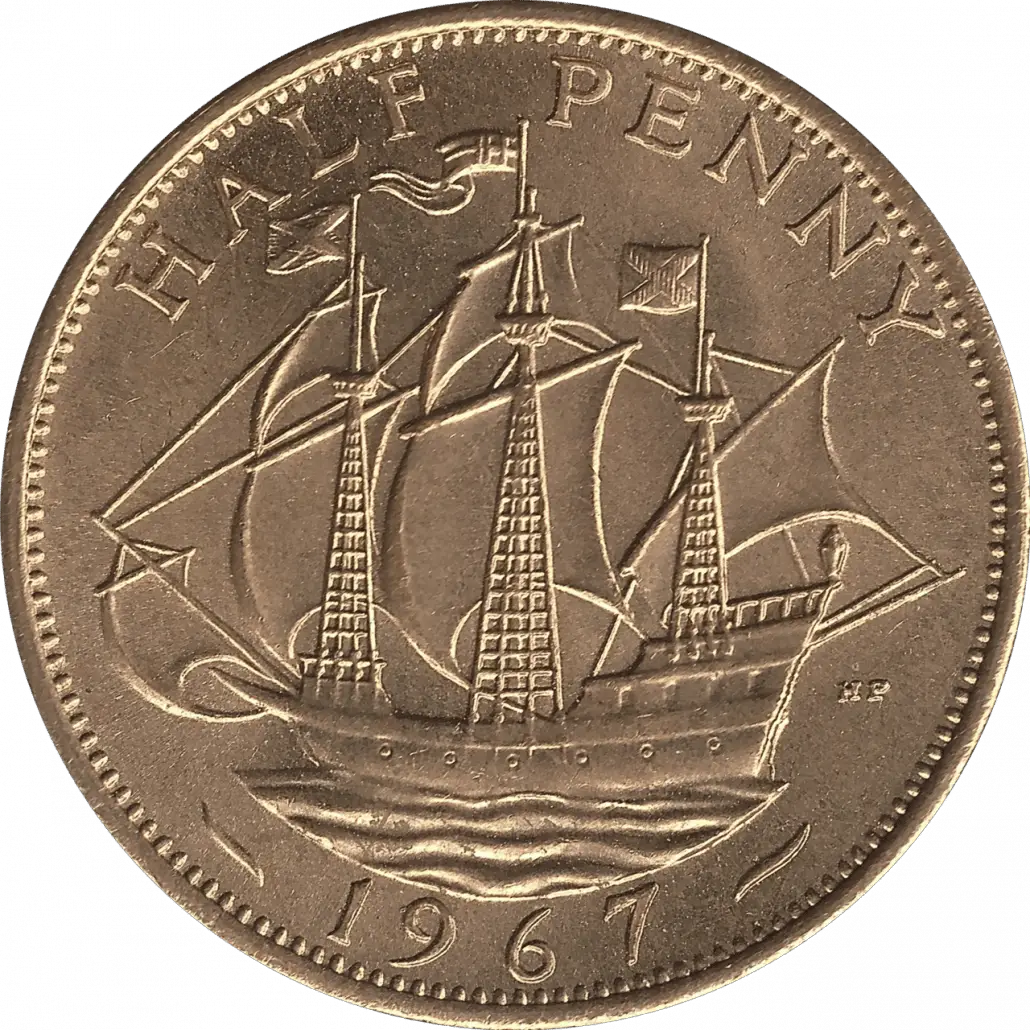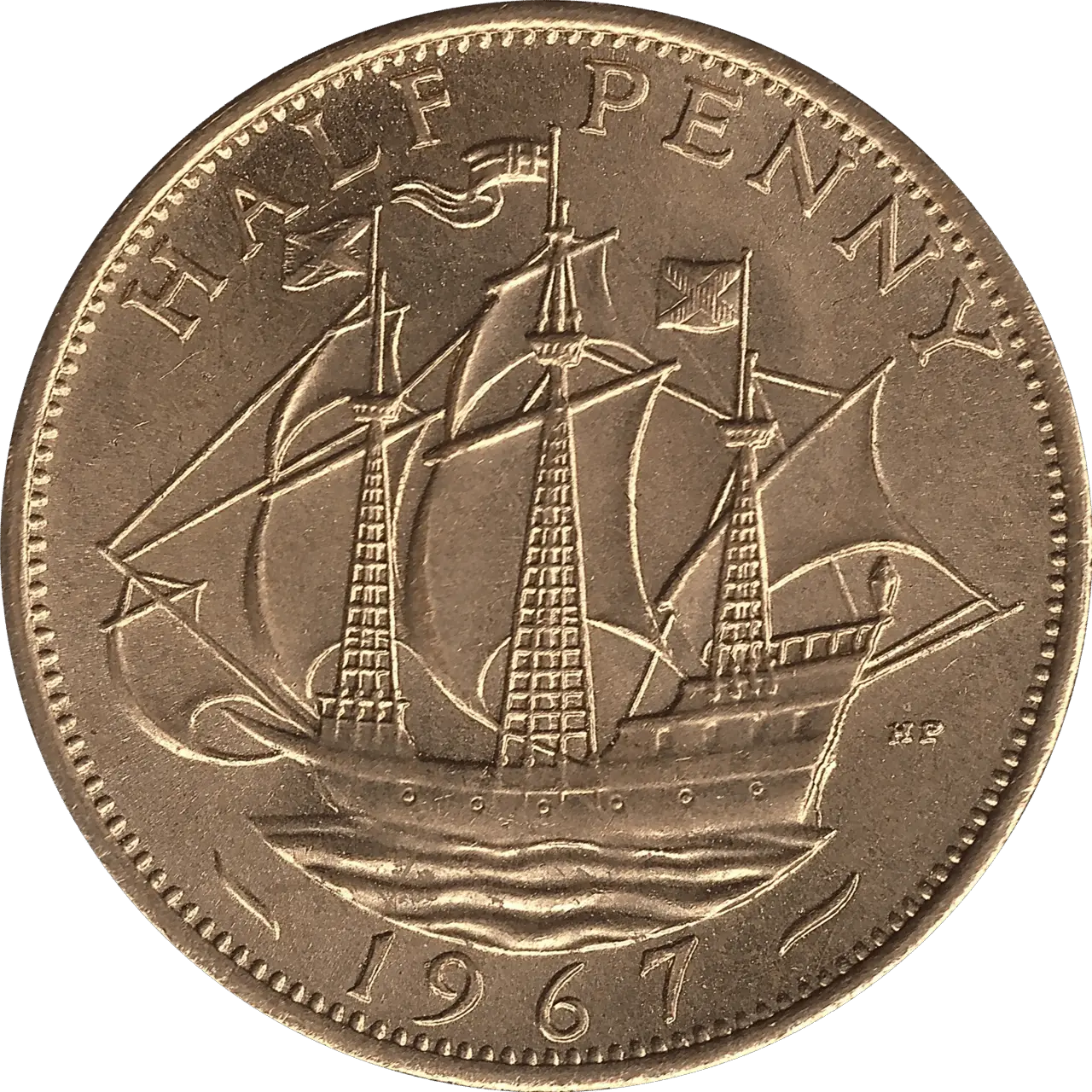Prior to decimalisation in 1971, several coins were stripped of their legal tender status and the pre-decimal halfpenny was one of them – but how much is a 1967 halfpenny worth today?
You can expect to pay between £0.20 and £1.00 for a 1967 halfpenny, but this can vary depending on where you purchase the coin from and what condition it is in.
In the rest of this article, we’ll dive into the specifications of the coin to learn about its history and why you should consider adding one to your collection.
Is The 1967 Halfpenny Rare?
The best way to estimate the rarity of a coin is to look at the mintage figures alongside how long it has been/was in circulation.
In this case, the 1967 halfpenny had a mintage of 146,491,000, which is a very large amount. Another thing to consider is that the pre-decimal halfpenny ceased to be legal tender on 31 July 1969.
This means that, alongside the very large mintage amount, the coin was only in circulation for around 2 years before it ceased to be legal tender; making it very likely that most of the coins would’ve been collected or stored away over the years.
In summary, the 1967 halfpenny is not considered to be rare at all, which is reflected in the average sale price. It still makes a nice addition to any collection though, as it was the last pre-decimal halfpenny ever produced for circulation.
1967 Halfpenny Design
The 1967 halfpenny features the Queen Elizabeth II portrait first used in 1953 following the death of her father King George VI, as well as the Golden Hind reverse design that was introduced at the start of King George VI’s reign in 1937.
Obverse Design

The obverse design was created by Mary Gillick and is known as the first portrait of Queen Elizabeth as it was used from the year she succeeded the throne.
The inscription + ELIZABETH · II · DEI · GRATIA · REGINA · F : D can be seen around the edge and translates to Elizabeth the Second, by the Grace of God, Queen, Defender of the Faith.
Reverse Design

The reverse design of the halfpenny between the start of King George Vi’s reign in 1937 until it ceased to be legal tender in 1967 is perhaps one of the most iconic designs of the 20th century.
The centrepiece of the design is the Golden Hind, a ship used by Sir Francis Drake to circumnavigate the world, with the inscription HALF PENNY above and the date 1967 below. The initials HP are seen to the right of the ship which stands for the designer Thomas Humphrey Page.
Why Were Halfpennies Still Produced After 1967?
It may sound a bit confusing at first, but there were two types of halfpennies – a pre-decimal version and a decimal version.
The pre-decimal halfpenny had a value of 1/480 of a pound sterling, as one penny was worth 1/12 of a shilling to which there were 20 to the pound.Specification Pre-Decimal Halfpenny Decimal Halfpenny Diameter (mm) 25.48 17.14 Weight (g) 5.67 1.78 Metal Bronze Bronze
The decimal halfpenny was introduced in 1971 and had a value of 2.5 new pence, and so a new design was also introduced with a much smaller diameter and weight. Decimal halfpennies were only in circulation until 1884 when they were demonetised and withdrawn from circulation.
What About The 1970 Pre-Decimal Halfpenny?
There was indeed a halfpenny issued in 1970 that was still pre-decimal with the same design as the 1967 coin, but this version was not minted for circulation and instead was issued in souvenir sets for collectors. This uncirculated coin served as a farewell to the pre-decimal halfpenny and gave collectors the chance to add a much better condition coin to their collection.
The mintage for this version was much smaller at just 750,000 which means it is more valuable than the 1967 version.
Final Thoughts
Considering the very cheap price of a 1967 halfpenny, it serves as a great addition to any collection as the last circulating pre-decimal halfpenny.
Although the 1970 version was produced at a later date, these coins never entered circulation which can make a difference to some collectors.
